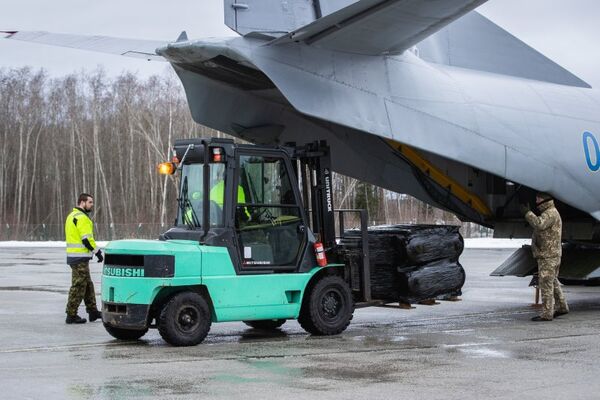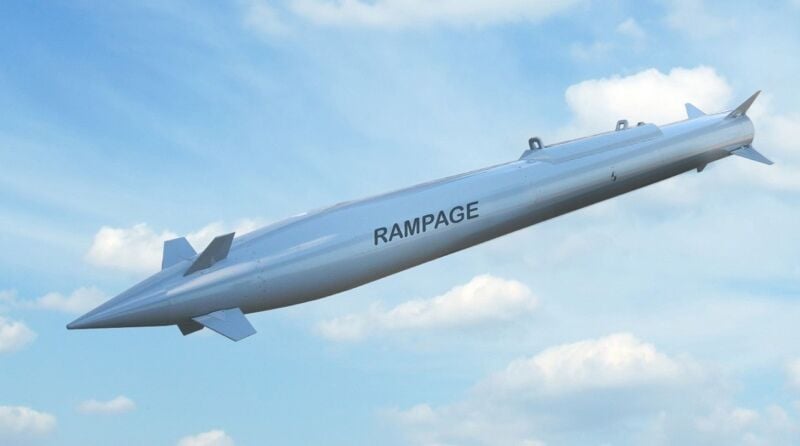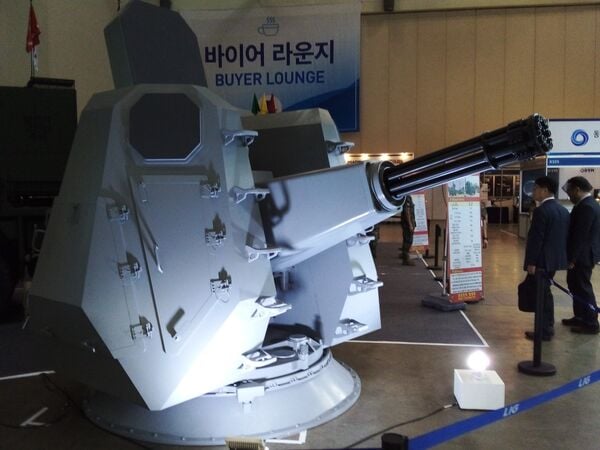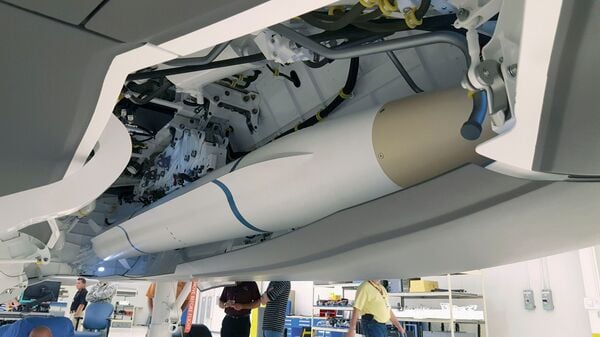- About
- Intara
- Capabilities
- Advisory
- Resources
- News
- Store
Ukraine conflict: EU breaks with history to send weaponry to Ukraine
28 February 2022
by Brooks Tigner


Equipment such as Javelin anti-tank weapons donated by Estonia to Ukraine will be financed by the EU's European Peace Facility. (Estonian MoD)
For the first time in its 65-year existence the EU will finance and organise the transfer of lethal weaponry to a country in conflict, in this case, Ukraine, to shore up its fight against Russia. The historical decision came after a snap virtual meeting of EU foreign ministers on 27 February, the fourth in a week, as the EU lined up its increasingly punitive sanctions against Moscow and its political, military and business elite.
The weaponry will be financed by the union's European Peace Facility (EPF), whose EUR5 billion (USD5.6 billion) budget for 2021–27 is designed to help weak, faltering or failed states in Europe's neighbouring regions.
“Another taboo has fallen: that the European Union could not provide arms in a war,” announced Josep Borrell, the EU foreign policy chief, after the unprecedented agreement. Noting that the decision will involve “the most important” weapons for fighting, he said, “We are going to provide even fighter jets, and not just simply ammunition.”
The ministers agreed to set aside EUR450 million to finance weapons transfers from their countries and EUR50 million for non-lethal supplies and equipment. Aside from weaponry, Kyiv has requested helmets, protective gear, and medical supplies and first-aid kits.
The total value of arms headed to Ukraine will be greater than the EPF funding because “you have to add all the materiel that the member states will be providing on their own”, observed Borrell. He added that the EU would also immediately help boost Ukraine's cyber defences.
According to EU officials, application of the EPF funds will be retroactive, reimbursing national capitals for selected transfers since 1 January. The EPF's steering committee of national representatives will decide which lethal and non-lethal transfers will qualify for the money and calculate the amounts.
One senior EU official said Poland, with its long frontier with Ukraine, volunteered to organise the logistics for transferring the weapons and supplies.
“We want to match what the Ukrainians want with what the member states can offer,” said the official on 27 February, adding, “I doubt any member state would risk sending convoys into Ukraine, so I imagine the weaponry would be handed over at the border. But it will be up to each capital to decide that. Some of these weapons will already be in hands of the Ukrainian military, having been delivered since the beginning of this year.”
The official added that all EU foreign ministers confirmed their governments will help Ukraine with either lethal or non-lethal military aid, “even those traditionally uncomfortable with arms exports. We want this discussion [of the EPF] to be an incentive for the member states to step up their deliveries”.
Indian Air Force inducts Rampage long-range missile
02 May 2024
by Akhil Kadidal & Raghuraman C S


The Elbit Systems Rampage is a stand-off weapon with all‐weather capabilities and is designed for deep penetration strikes. (Elbit Systems)
The Indian Air Force (IAF) is inducting Elbit Systems' Rampage supersonic, long-range air-to-ground missile, the Indian Ministry of Information and Broadcasting (MIB) announced.
As a stand‐off weapon (SoW) capable of engaging high‐value targets in attack missions, the Rampage is expected to give the IAF significant strike capabilities. The IAF's induction of the missile will allow its aircraft “to strike targets up to 250 km away”, the MIB said on 30 April.
According to the MIB, the missiles are being deployed on IAF Sukhoi Su-30, Mikoyan-Gurevich MiG-29, and Sepecat Jaguar combat aircraft.
The IAF told Janes it could not comment on the matter as the service has not issued an “official notification” on the missile. Janes understands that while the missile has likely been deployed with IAF Su-30 and Jaguar units, it is not yet operational with the IAF's MiG-29 UPGs and Fulcrum-As.
The IAF acquisition follows the Indian Navy's acquisition of the missile for its carrier-borne MiG-29K fleet. Janes
South Korea to bolster naval ballistic missile, unmanned systems interception capabilities
29 April 2024
by Ridzwan Rahmat


A model of the South Korea-developed CIWS-II on display at MADEX 2023. (Janes/Ridzwan Rahmat)
South Korea's defence procurement agency has announced programmes to bolster its navy's ability to intercept ballistic missiles and unmanned vehicles.
These include a programme to improve the country's indigenous close-in weapon system (CIWS) project undertaken in consideration of recent changes in warfare techniques, said the Defense Acquisition Program Administration (DAPA) in its announcement on 26 April.
South Korea's indigenously conceived CIWS is known as the ‘CIWS-II' and it is being developed by LIGNex1 under a contract awarded in 2021.
It is based on a seven-barrelled Gatling gun system incorporated with a tracking active electronically scanned array (AESA) radar, a four-faced AESA search radar, and an electro-optical tracker. The weapon can fire about 4,200 rounds per minute.
At the 161st meeting of the country's Defense Program Promotion Committee that was held on the same day of the announcement, changes to the CIWS-II programme's quantity and localisation plans were decided on, DAPA said without giving further details.
Netherlands, Poland approved for AARGM-ER SEAD/DEAD missiles
25 April 2024
by Gareth Jennings


An AARGM-ER seen being test fitted into the internal weapons bay of an F-35 combat aircraft. The US has approved the sale of the missile to both the Netherlands and Poland. (Northrop Grumman)
The US government has approved the sale of the Northrop Grumman AGM-88G Advanced Anti-Radiation Guided Missile – Extended Range (AARGM-ER) to the Netherlands and Poland.
Announced by the US Defense Security Cooperation Agency (DSCA) on 24 April, the approvals cover 265 of the suppression of enemy air defences/destruction of enemy air defences (SEAD/DEAD) missiles for the Netherlands for approximately USD700 million, and 360 missiles for Poland for approximately USD1.275 billion. Both approvals cover related equipment, training, and support.
“The proposed sale will improve the Netherlands'/Poland's capability to meet current and future threats by strengthening its self-defence capabilities to suppress and destroy land- or sea-based radar emitters associated with enemy air defences. This capability denies the adversary the use of its air-defence systems, thereby improving the survivability of the Netherlands'/Poland's tactical aircraft,” the DSCA said of both approvals.
For the first time in its 65-year existence the EU will finance and organise the transfer of lethal ...
Latest Podcasts
Using OSINT to support law enforcement
Ritu Gill, Intelligence Analyst, joins Harry and Sean to discuss the practical use of OSINT to support law enforcement. Ritu discusses it’s use in supporting risk assessments and classified or closed sources of intelligence. She also discusses t...
Listen nowJanes Case Studies
Using Janes Intara to build a common intelligence picture: Russian build up on the Ukrainian border
View Case StudyNews Categories
 Land Details
Land Details